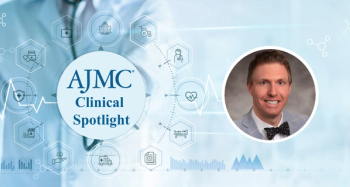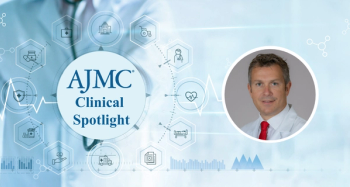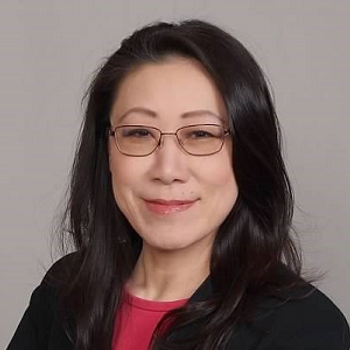
Integrating Cost and Efficacy Considerations in Cancer Care: Ryan Haumschild, PharmD, MS, MBA
Ryan Haumschild, PharmD, MS, MBA, discusses key considerations for pharmacists to ensure access to cutting-edge therapies for patients with cancer.
Careful consideration of individual patient factors and thorough consultations are key for pharmacists to maximize their impact on cancer care access and adherence, according to Ryan Haumschild, PharmD, MS, MBA, vice president of pharmacy at Emory Healthcare and Winship Cancer Institute.
In this interview with The American Journal of Managed Care® (AJMC®), Haumschild emphasizes the crucial role of pharmacy in facilitating access to cutting-edge therapies.
This transcript has been edited for length and clarity.
AJMC: How can oncologists and pharmacists better collaborate to ensure that cost considerations are incorporated early in treatment planning without compromising efficacy or timeliness of care?
Haumschild: Cost considerations are big, and we want to be thoughtful of those, but we know that efficacy and time to treatment still have to be paramount to get great outcomes for patients. That's really where the pharmacist, the oncologist—the providers—come together, and I think that's where we can work together. And part of it is doing our due diligence as pharmacy and bringing forward these new therapies for consideration to the pharmacy and therapeutics committee. How do we think about the clinical efficacy, the safety, and the pharmacoeconomic impact of these treatments? How do we think about, “Maybe this therapy might be more high cost on the front end, but at the end of the day, it's reduced the total cost of care”? I don't think that's that hard to quantify or at least evaluate as we're making decisions.
In the same regard, how do we evaluate the different treatment regimens as we build out the treatment protocol—whether it's in the electronic medical record or whether it's payer policy—so that we can make sure that we're reducing any of that friction between a provider trying to select the right therapy for the patient while making sure that costs are being taken into consideration? Now we're having more competition across different therapeutic areas, and how do we really make sure that we're making a cost-effective decision but doing that in a way that allows for innovation to occur?
Lastly, I think pharmacists are also aware of side effect profile impacts and what those later lines of treatment will be if we don't create consistency on a certain therapy, because as we know, as patients progress through the first, second, third line, and so on, the cost of care continues to go up as well. It really comes down to appropriate treatment planning and shared decision-making with that patient so they understand what their out-of-pocket expense is going to be. The institution finds out what their out-of-pocket expense is, and you work collaboratively with the payers that are going to be improving these therapies to make sure that we're not consistently choosing something that's going to get denied and ultimately lead to a patient not getting started on treatment or not even starting therapy in general.
AJMC: As a pharmacist, how do you help patients navigate the financial assistance landscape, and what tools or resources are most useful in that process?
Haumschild: As a pharmacist, I think one of our primary decisions is therapeutic selection and planning, but it's really making sure the patient can get on the treatment. And as you can imagine, financial barriers are commonly addressed as part of this whole workup of the patient. If I'm sitting down with a patient, number one, I want to understand their goals for treatment. What are some unique considerations that I may not have thought of just by reviewing that chart alone or prepping for clinic? But thirdly, what is the financial means that patient has? And I think that's a key consideration. Again, can they make it to their appointment in time? Do they have lodging nearby if they're on an innovative treatment and maybe they want to stay closer to the cancer center? Or what is their current insurance coverage, what is their patient out-of-pocket expense, and what treatments have they dealt with so far that year? Are there key considerations going on in their life that might really be financially toxic, that might be a barrier to starting therapy? That assessment is really important.
From there, there are different tools that we can choose, just like we have tools in terms of the treatment of the patient, to attack that financial toxicity. Some of that begins with looking at whether there are any manufacturer-supported programs. I think they play a huge role in having programs for patients in need to make sure that we can address this from a multifactorial perspective, whether it's co-pay, whether it's drug replacement, or patient support in terms of lodging or travel. I think then you can go even deeper, right? And for patients on Medicare or patients who might have exhausted some of the pharmaceutical industry–sponsored support, how do you go to grants or foundations? There are a lot of foundations out there and grants that are made available to these patients, and they open up on a rolling basis. Funds are dynamic, and it's our job to make sure that we're keeping those connections open. Lastly, we need to make sure, foundationally, that every patient is being screened for any type of financial support, and we’re not just saying, “Oh, I'm only going to look when the patient comes to me,” but being more proactive. It’s saying, “Here's your out-of-pocket expense. Can you afford that? Do you want to engage in a meaningful conversation?” We need to address that more on the front end. Just like care planning for safety and efficacy and cost, the pharmacist can care plan to make sure a patient can sustainably afford their treatment, even if they have a really good, durable response over many years.
AJMC: How have manufacturer-sponsored patient assistance or co-pay programs evolved in recent years, and how effective are they in bridging access gaps for patients?
Haumschild: Manufacturer programs have evolved over the years, and I think they had to because patients have more and more of a need. You're seeing combination therapies. You're seeing changes in benefits from commercial [payers] maybe streamlining their offerings, to co-pay accumulators and maximizers that obviously have an end-to-end point on the patient who's utilizing those services. And I think you're seeing changes in Medicare with the Inflation Reduction Act and changes there. I think manufacturers have been dynamic in their programs. Some are identifying, with CAR [chimeric antigen receptor] T and cell therapy, there might be less of a need for duration of coverage, but more in-depth coverage of that patient. You're seeing some start to really identify wraparound solutions for social determinants of health as well. And then I think manufacturers are also making sure that we're reducing the burden of getting that patient signed up. So more and more, we're seeing medication assistance coordinators at our different facilities and even some of the health plans that are aiding the patient. If you can reduce the burden of having that patient manually sign or having to put down more information and really have a surrogate do that work on their behalf, that enables the patient to get signed up easily, it helps the patient engage with those resources more effectively, and at the same time, it allows that payment or that kind of financial support to occur more seamlessly, reducing that burden on the patient, but allowing that wraparound care structure to be the one that can engage the most.
AJMC: What role do specialty pharmacies play in coordinating access to immunotherapies, and how can clinical teams make the most of that partnership?
Haumschild: The role of specialty pharmacies is going beyond just orals and injectables. It's now going into clear-bagging products and subcutaneous injectable products, and you're seeing the adoption of specialty pharmacy permeating even greater. I think their role is becoming not just a dispensing pharmacy anymore. It's now, “How are we managing the care management?” and “How are we making sure that patients are getting these therapies filled?” Then the next generation is the clear-bagging or white-bagging strategy, where you have injectable products, immunotherapies, that are now flowing through this channel, reducing the cost of the plan and making sure patients get access. But they're evolving the way they provide care. It's now, “How do I not just look up pharmacy benefits, but maybe there's medical benefit support, maybe there's co-pay support?” Maybe it's couriering medications to that patient's preferred infusion location, either within a health system or external. In that same regard, it’s making sure they're counseling more on immunotherapy side effects, just like you would in an infusion center. And I think working on those—proportion of days covered, coordinating the prior authorization of both an oral and injectable agent—and then, like we talked about earlier, interacting with a manufacturer support program for an immunotherapy as well as an oral therapy, and making sure that they're expanding kind of their service offering to be more focused on that medication access, instead of just medication assistance and prior authorization alone.
Newsletter
Stay ahead of policy, cost, and value—subscribe to AJMC for expert insights at the intersection of clinical care and health economics.







































